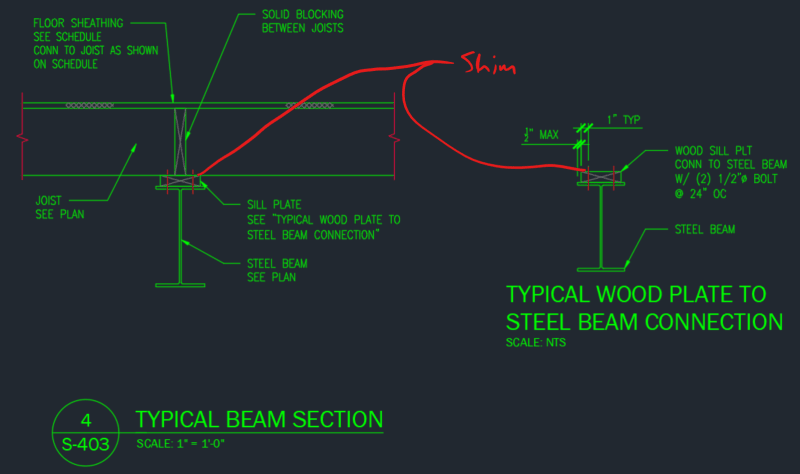milkshakelake
Structural
I'm adding a steel beam under the 2/3rd span of existing joists, since the joists fail without the beam. These are my details below. The issue: the joists are not level, so some of them need shims. How do I install these shims? I'm mostly worried about nailing between the joist, shim, and sill plate runner.
I normally say "shim as required." But the contractor said he needs a good shim detail. When the contractor doesn't want to cut corners, I'm always going to help.

I normally say "shim as required." But the contractor said he needs a good shim detail. When the contractor doesn't want to cut corners, I'm always going to help.

